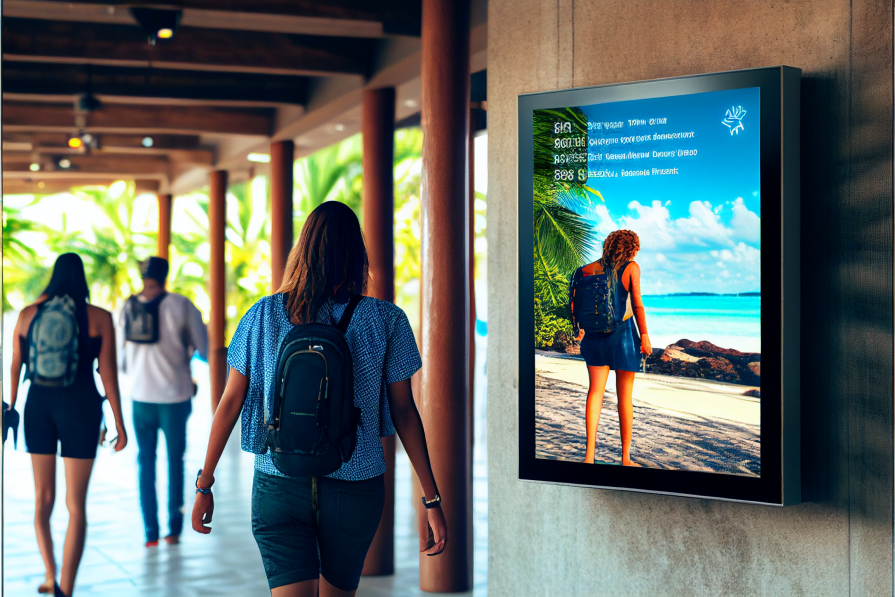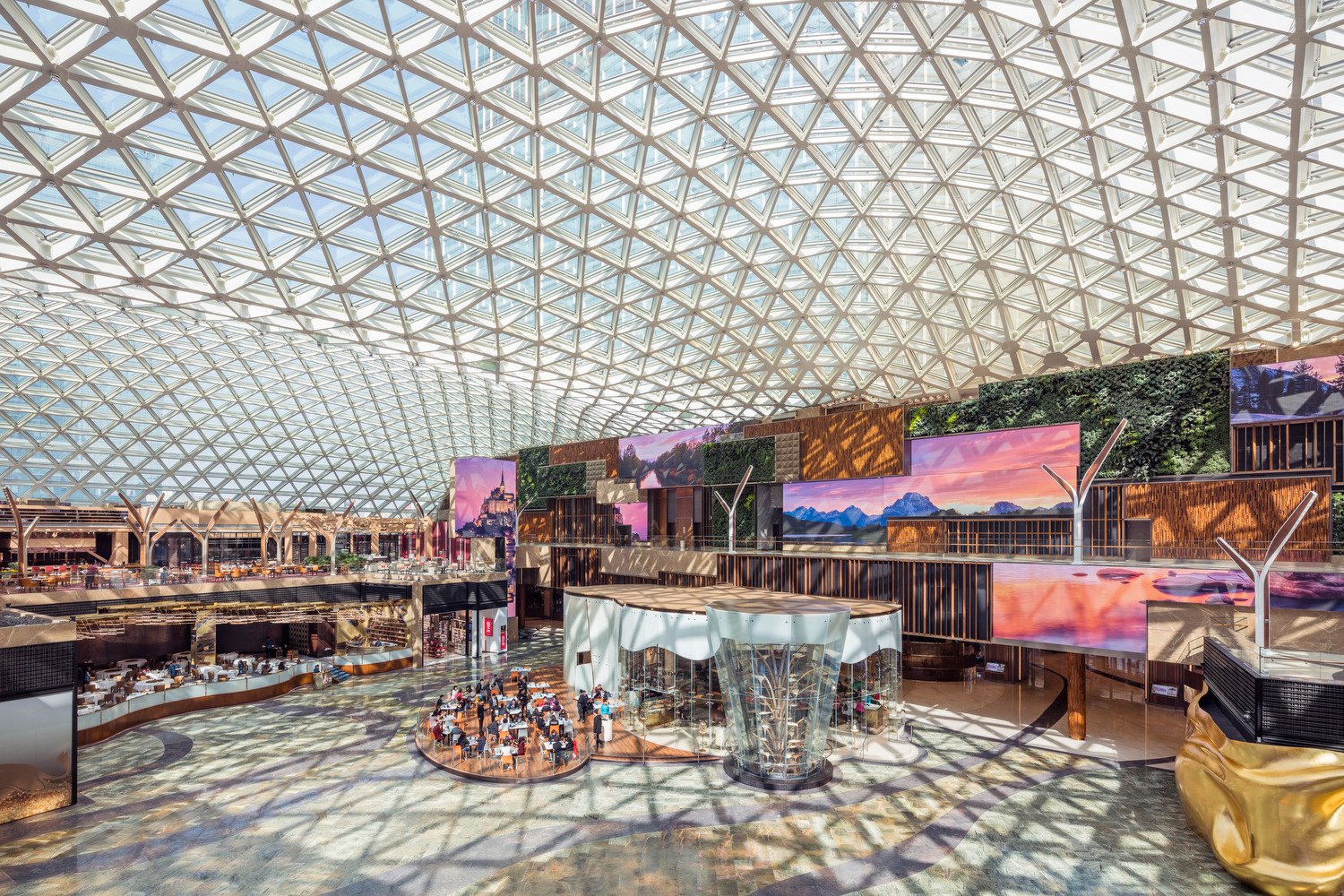
4 Ways to Solve Your Hotel’s Digital Signage Challenges
Step into an almost any modern hotel, and you’ll see digital signage somewhere. It’s become a standard audiovisual (AV) component that can do many things — inform, entertain, help, direct and promote. As the hospitality experience evolves to meet guests' current and future needs, hotel digital signage will play a key role.
As technology becomes smarter, more efficient and more flexible, the possibilities for hotel digital signage expand. It’s time to think beyond the basics of using these displays and consider how they can enhance a multitude of moments for customers.
The Hotel Digital Signage Landscape and History
Digital signage has been prominent in hotels for over a decade. Much of it replaced static signage, as the environment can be very dynamic regarding new events and information. It fulfilled the need to make it easy to change these signs and more cost-effective than the continuous replacement of traditional signage.
Additionally, its first uses included wayfinding. A big and bright digital sign offering directions was more visible and useful to guests. These applications were only the beginning.
As the hospitality sector became comfortable with digital signage, they realized it could be an excellent medium for promotion. It was a canvas that integrated into the environment and could deliver messaging to persuade people to eat at a restaurant, book a spa service, shop at a store or see a show. Promotions didn’t have to be just at the hotel; they could be for the city itself, providing a way to partner with third parties and give them access to advertise to guests.
The unique qualities of digital signage and its ability to captivate make this signage more engaging. As a result, hotels began to seek new ways to use it to fit the modern traveler’s expectations. Using this technology makes sense from a consumer engagement perspective, as 70% of hotel guests find digital displays entertaining.
So, what’s the future of digital signage in hospitality? How can it solve current challenges and deliver exceptional guest experiences?

Current Hotel Digital Signage Challenges and How to Solve Them
Even though digital signage has been a hallmark of hotels for years, new issues have arisen. Let’s look at what those are and how to solve them.
Digital Signage Isn’t Adding Value to the Guest Experience
One of the consistent challenges with digital signage is integrating it into the guest experience so that it adds value versus distracts or frustrates. There are some key areas to adjust so that your digital signage is a help, not a hindrance. Frictionless, personalized check-in can do that.
The self-check-in process accelerated during the pandemic. Guests welcomed it because it was convenient, safer and a familiar experience to checking in for a flight. They have little patience for long queues, and many visitors don’t need special services.
- Touchscreen displays are self-explanatory and offer a means to transact.
- The digital check-in must be engaging as well as functional.
- The experience could have multiple options. Express check-in would be the basics, but others could choose to do more things like adding upgrades, spa services or reservations. They could do it all from the first screen. Incentives attached to these could drive conversions.
- Make the experience of check-in enjoyable with infotainment. You could have a video wall behind the touchscreens that display digital art or tells the story of the hotel or city. It will draw people in to try out using check-in or guest services. It could also reduce the perceived wait time if there’s a line.
- The latest touchscreen technology doesn’t require any physical touch. Guests could use their mobile devices to drive. By enabling this, you also have an opportunity to get them to download your app for further interaction.
- Wayfinding will do more than point people to the elevators or restaurants. Let them plot their path to where they need to go and highlight what's on the way.

For guests that will still prefer a traditional check-in, digital signage can support a better experience here, too.
The Warmest Welcome Can Be a Human and Technology Hybrid
First impressions are everything in hospitality. They set the tone of the say. If it’s friendly and positive, those guests may spend more or become repeat customers. So much hinges on those first few minutes. Your staff takes the lead here to welcome guests and delight them. Combining this level of service with technology can make the experience even more memorable for all the right reasons.
A video wall behind the check-in desk is a way to engage and entertain. It can also have an element of personalization. For example, it could include a welcome message for the guest as they check in to the hotel. A small personalization gesture like this can go a long way to enhance the experience.
A video wall could also inform of the latest events and advertise the hotel’s amenities. Break that up with some entertaining content, such as animated scenes that represent the season or include all the city’s well-known landmarks and attractions.
To drive further engagement after check-in, insert QR codes to download the hotel’s app and explain its value, which could include making reservations for dinner or spa services. Guests downloading and using your app can also yield lots of great data about preferences, interactions and purchases, which can inform your digital signage content strategy.
Digital Signage and Social Engagement
Digital signage can be an engagement driver with a great story. Many locations use them to announce their social handles. It’s not really interactive or captures the opportunity for social engagement.
The solution is to employ digital signage and other AV technology to create experiential design installations. From specialty audio to projection mapping to virtual reality (VR) assets, you can create a unique world that fits the theme of the hotel or city. For example, Chicago is the Windy City. You could develop a way for visitors to capture images of a windy moment with an exciting backdrop of digital signage, a roar of wind with audio and VR elements. Guests snap those photos or record videos and share them across social platforms.
This exposure is good for your brand, and your customers will have an experience like no other.

Multi-Sensory and Immersive Experiences Can Wow Guests and Get them to Return
Today’s consumer spends a lot on experiences versus just products. When it comes to travel and hospitality, guests want something more than what they could get at home. It must be extraordinary, combining elements that engage multiple senses and bring the space to life.
A great example of technology-rich immersive experiences is “The Spectacle” at MGM COTAI. The architecture and structure are stunning, and its 25 LED walls immerse visitors into a world of art. Because the atrium has glass panels, lots of natural light fills the space, which requires displays that look good in any light. The experience also includes personalized greetings and interesting facts.
The immersion continues in the elevators that showcase virtual time-lapse recreations of history. At the top, guests find another video wall that captures the skyscape of the city.
Digital signage has many distinct possibilities to encourage engagement and interaction and enhance every experience.
If you’re inspired, here’s what you need to know about starting a project.
Best Practices for Improving and Updating Digital Signage in Your Hotel
When considering and prioritizing digital signage projects, where should you start? The first step is to work with a technology design consultant. Such an expert will guide you through product selection and installation, so you have the right technology that’s as future-proof as possible.
When specifying equipment, you should also think about energy savings and sustainability. Today’s advanced technology is efficient in its energy use and designed to be eco-friendly.
In ranking what to do first, consider all the changing consumer demands and expectations discussed. Prioritize what will have the most immediate impact on the guest experience.
Collaboration with partners who are experts in design, technology and integration will be critical for creating optimum experiences.
Start reimaging hotel digital signage and how it can resolve challenges and power innovation.
Alexander Hann
Alexander Hann, Communications Specialist, understands the challenges that clients face when they are making decisions about technology. He uses his extensive experience of communicating complex concepts to write about the latest developments in technology in a way that clearly explains benefits for business and technical decision-makers.










.jpg?width=1500&height=995&name=ELC501_N17_medium%20(1).jpg)

![[Learn how to use Digital Signage the right way in your resort]](https://no-cache.hubspot.com/cta/default/5104351/d59340a5-4b6b-4f33-b85a-021376d6ec37.png)








































































































































































































